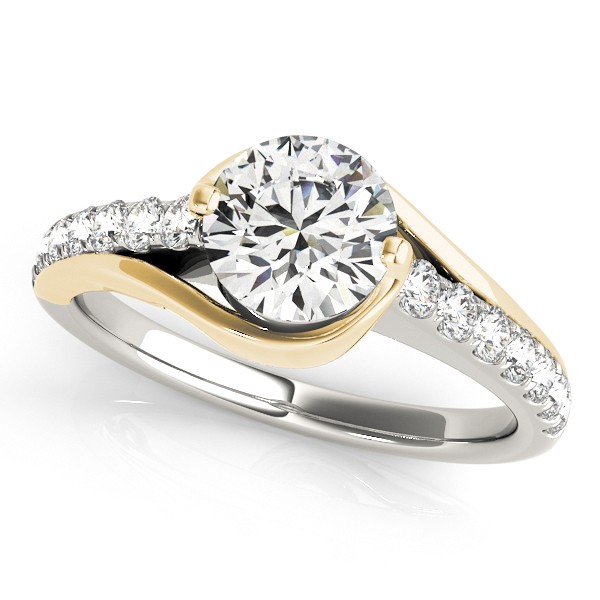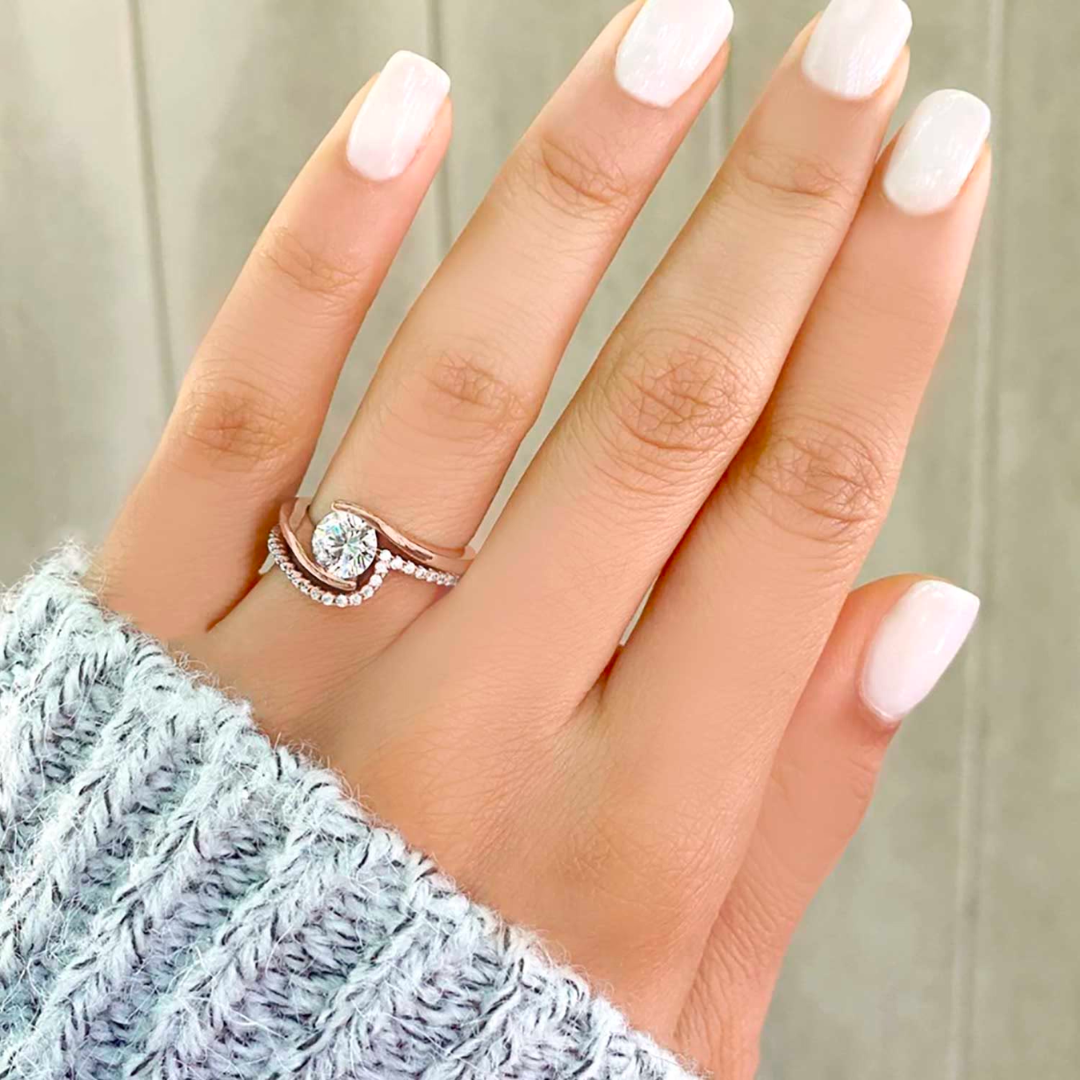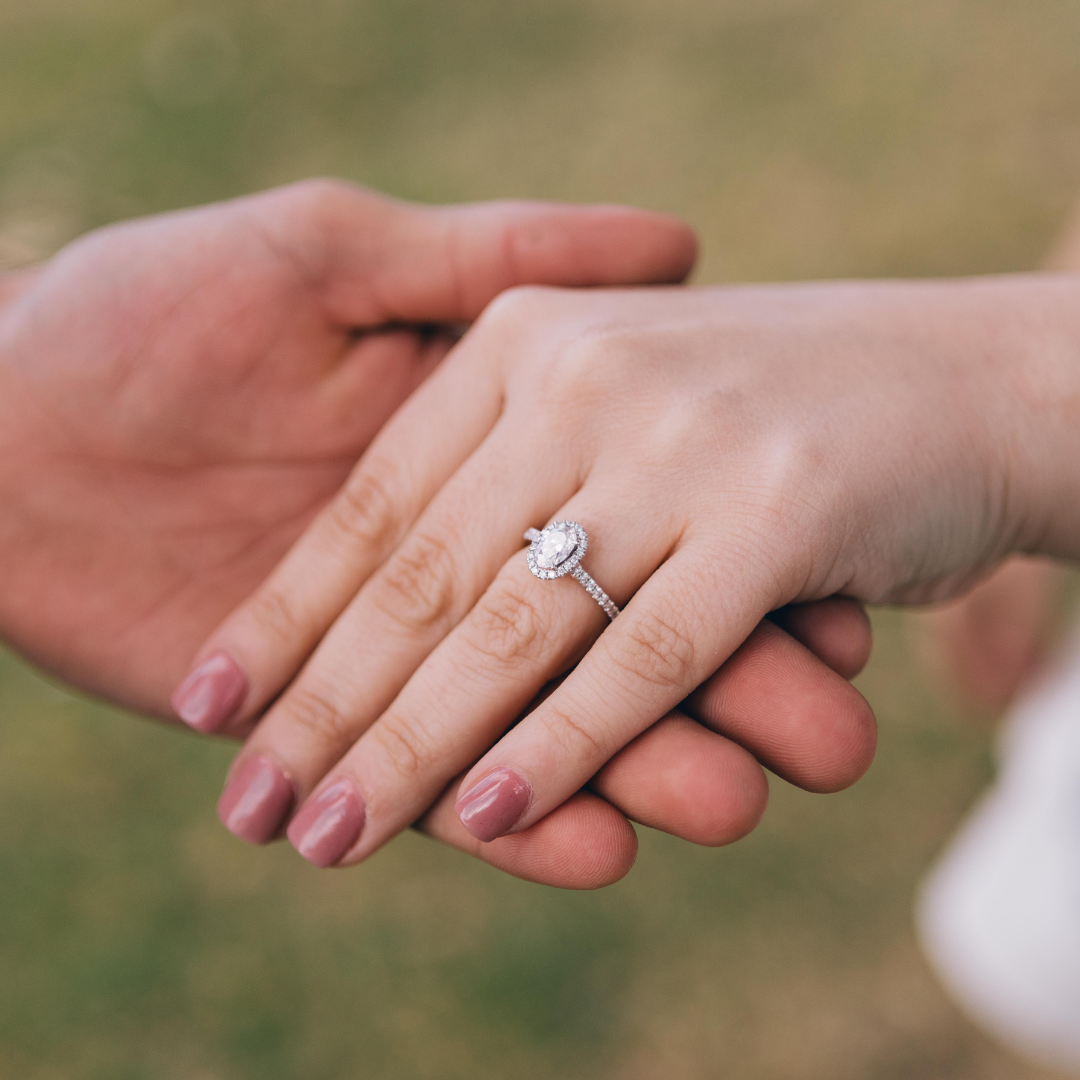
Tips for Buying the Perfect Diamond Engagement Ring
Buying diamond engagement rings can be nerve-racking, but we’re here to help. We compiled tips from experts about how to shop for, and ultimately buy, the best engagement ring.
Know your budget and do your research
There may be no one better to take jewelry advice from than the experts at the Gemological Institute of America (GIA), which sets and maintains the standards used to evaluate gemstone quality around the world. The institute is dedicated to research and education in the field of gemology and the jewelry arts and according to the GIA, the first step in purchasing the perfect diamond engagement ring is deciding how much you want (and realistically can) spend. Having a price range in mind before you start shopping, and going into stores with at least a ballpark of what you’re willing to shell out, will help you, and your jeweler, find the right engagement ring that fits your budget. It’s even the number 1 question most jewelers ask their customers.
Having a budget in mind cuts down time and effort when it comes to making the final decision.
GIA has another suggestion for shoppers: “do your homework.” If your shopping for an engagement ring you should study the 4Cs (cut, clarity, color and carat) and decide (either yourself or with your partner) what is most important to you and where you might want to compromise in order to make your price range work. It’s also crucial that you learn about the 4Cs so that you understand what you’re buying. The 4Cs – established by the GIA – influences the value of a diamond and the overall appearance of the stone to the naked eye. Do you want a specific carat? Are you willing to compromise on the stone’s clarity? What kind of cut do you prefer? All these are decisions that need to be made and its better if you start thinking about them before you actually shop for an engagement ring.
Take a moment to realize who you’re buying the ring for
If your buying the ring for someone else, it’s not for you! So make sure you know your partner’s taste and ring size. She will be wearing this ring every day of her married life so make sure its speaks true to who she is. Pay attention to the kind of jewelry she currently wears and see what her style is (or you can always ask her). If she hasn’t already told you, see if she prefers white gold, yellow gold or rose gold. Does she like gemstone engagement rings? What about pearl engagement rings?
Does she like dainty, delicate pieces of jewelry or more chunky, thick styles? Try to find out what her favorite cut and shape is. What kind of setting would she prefer? Have these preferences in mind when you decide to go shopping because if you buy something similar to what she likes, you can’t go wrong.
If you’re not sure her diamond shape preference, the safe bet is to stick to the classics, such as square or round engagement rings. Preference in shape can also be reflected in other aspects about the person, according to GIA. The institute explained the following:
If she prefers clean, modern lines in furniture, for example, it’s likely she’ll react well to the same aesthetic in rectangular or square shapes. If she tends towards the traditional, a round shape rarely misses. Are her tastes eclectic or bohemian? She may favor more unusual shapes, like a triangular or marquise shape.
GIA also gave advice when it comes to deciding on a setting. The institute said: “Consider her lifestyle and how well a certain setting design will fit into it. If she’s more active or outdoorsy, look for lower profile, less ornate or more secure mountings, which are less likely to get knocked against or caught on things. If she’s more of a glamour girl, look for statement settings, with a higher stone profile, more intricate ring detailing or a unique motif.”
Find a good professional jeweler
This is a big purchase you’re making, so make sure you’re buying the ring from someone you can trust; someone who can answer your questions in detail; someone professional and reliable. Ideally, you want a professional with a good reputation. Try asking friends or relatives for recommendations, or you can seek a referral from a jewelry association. Also make sure to ask for an Independent Grading Report before purchasing a diamond to validate the quality of your diamond ring. The report is essentially an assessment of the diamond’s quality, and it provides a description of the diamond’s 4Cs. It also confirms that the stone is a natural or synthetic diamond, and lists any treatments the diamond may have undergone.
It’s recommended to have the diamond your buying appraised and insured. While the diamond grading report is an assessment of quality, an appraisal gives a monetary value to the diamond.
You can also ask your jeweler to have a laser inscription, which will help identify your diamond if it’s ever lost or stolen. You can have the diamond’s report number or a personal message inscribed on the girdle, which is the diamond’s perimeter.”
If buying online, be extra cautious
Make sure you know exactly what you are buying. To be certain you know the value of the stone you’re purchasing, look for specifics on its 4Cs. Make sure the diamond comes with an independent grading report and if the diamond comes with a GIA report, you can verify the report details on Report Check, GIA’s secure, online database.
Also, be certain you can trust the seller. What is the company’s reviews like? How long have they been in business for? What is the company’s return policy? Where is the seller located? Does it belong to any jewelry trade associations?
Be hesitant if its an out-of-country website and if you’re buying from online auction sites, look into buyer feedback and ratings and decide if you can trust what they are listing as the quality of the diamond offered for sale (such as photographs, a grading report, or a report number that can be verified).
Watch the video below to see GIA’s guide about how to choose a diamond.








POST COMMENT